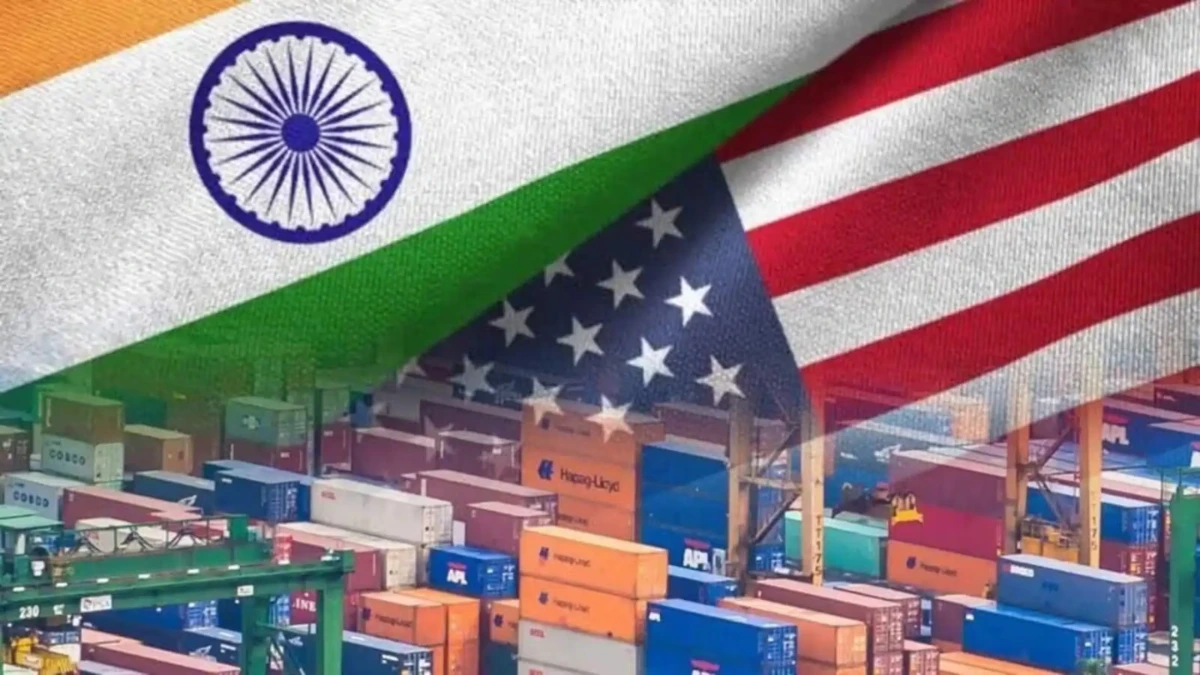
India has officially informed the World Trade Organisation (WTO) that it intends to slap retaliatory tariffs on a number of U.S. items in response to safeguard charges that the United States has imposed on Indian auto parts and cars. With India claiming that the U.S. tariffs violate international trade standards, this move, which was reported to the WTO on July 4, 2025, represents a major escalation in trade tensions between the two countries.
The United States has placed a 25% ad valorem duty on imports of passenger automobiles, light trucks, and specific auto parts from India, which has prompted the planned retaliatory actions. Washington approved these tariffs on March 26 and they went into effect on May 3, 2025. According to India, the U.S. should have formally notified the WTO of these moves, which serve as safeguard measures, in accordance with international trade agreements.
Jerome Powell: Fed Would Have Cut Rates If Not for Trump’s Tariffs
India Seeks to Recoup Tariff Losses

India announced its intention to halt concessions and other trade responsibilities under WTO accords in an official letter to the WTO’s Council for Trade in Goods. The projected $723.75 million that India claims the U.S. receives each year from its safeguard levies on Indian vehicle exports would be equal to the proposed retaliatory tariffs.
India claims that these retaliatory actions are in line with WTO regulations, specifically those outlined in the WTO’s Agreement on Safeguards and the General Agreement on Tariffs and Trade (GATT) 1994. When one member implements safeguard steps that adversely affect another without the proper notice or consultation, both agreements provide for countermeasures.
According to the WTO paper, “the proposed suspension of concessions or other obligations would take the form of an increase in tariffs on selected products originating in the United States.”
Major Impact on Indian Auto Exports

According to estimates, the U.S.-imposed tariffs affect Indian vehicle exports worth over $2.89 billion a year. In addition to hurting its economy, India claims the measure violates fair trade standards and will disproportionately affect Indian makers of light trucks, passenger cars, and auto parts.
India insists that no positive progress has been made in spite of repeated attempts to communicate with Washington on the matter. India claims that when attempts at dispute resolution are unsuccessful, it is forced to take action under WTO provisions that permit the suspension of comparable concessions.
Trump Threatens to Cut Elon Musk’s Subsidies Amid Feud Over ‘One Big Beautiful Bill
Broader Trade Tensions on the Rise

India has taken action against what it perceives to be unfair U.S. trade practices on multiple occasions in recent weeks. New Delhi also declared retaliatory actions in June 2025 in reaction to U.S. tariffs on Indian shipments of aluminium and steel. Despite their continued pursuit of a more comprehensive temporary trade deal aimed at increasing bilateral commerce and investment, these tit-for-tat exchanges reflect growing tension between the two nations.
Negotiations could become more difficult if retaliatory tariffs are imposed, even if both governments have indicated an interest in deepening economic cooperation. Increasing trade restrictions might impede the proposed agreement, which both parties had intended to complete by the end of July, according to trade specialists.
Diplomatic and Economic Implications

India has underlined that it is still dedicated to fair trade and respecting international standards in spite of the conflicts. Officials in New Delhi have reaffirmed that retaliatory tariffs are a valid WTO remedy when one party violates multilateral trade obligations and are not an indication of animosity.
Many people view India’s hard attitude as a component of its larger plan to establish itself as a major force in the control of global commerce. In an effort to diversify its trade relationships and lessen its reliance on any one nation, India has rejected unilateral trade measures by larger economies more and more during the past few years.
The United States, meanwhile, has not yet formally replied to India’s WTO notification. It might take months or perhaps years for a WTO dispute to be resolved, according to analysts, and Washington may now be under pressure to defend its safeguard measures.
